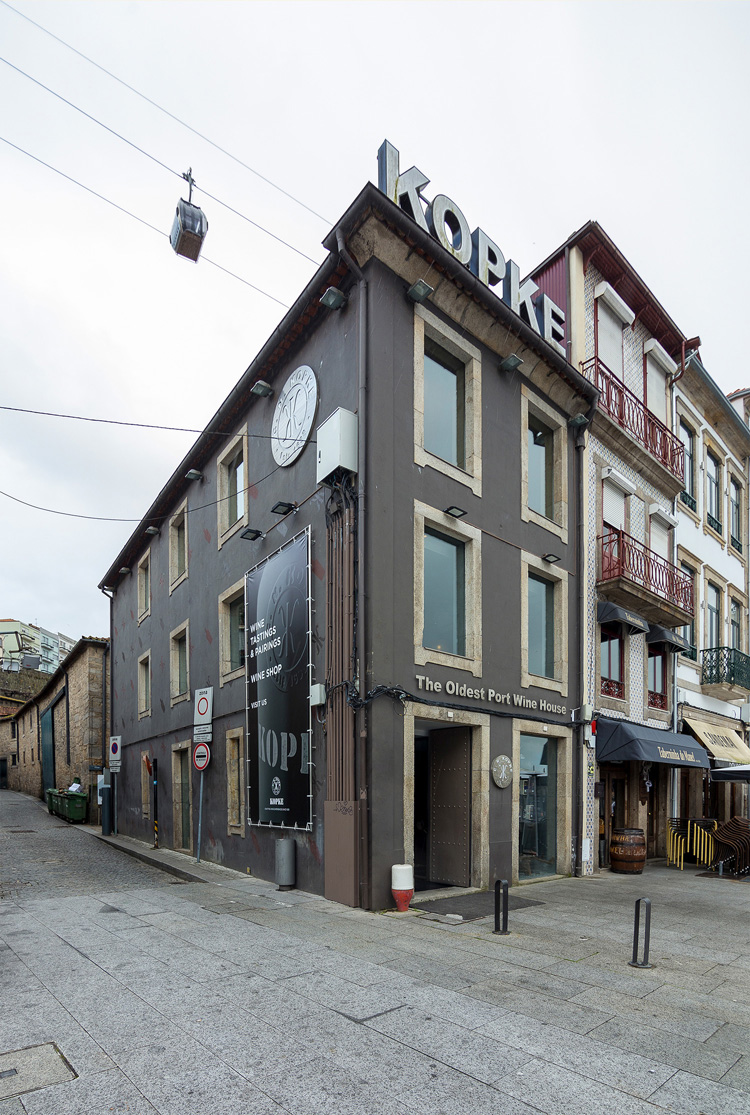Description
Brown-orange color. Beautiful aromas of blackberries, blueberries intertwined with scents of vanilla and chocolate. When tasting, you encounter a complex and intense palette of various black fruit types, spiciness, caramel, and a bit of chocolate. This vintage has an excellent balance between sweetness - acidity, with a long finish. This is more than just a sweet port. Aged for 3 years in wood.
Serving:
Ideal with desserts featuring caramel, coffee, or dried fruits such as currants, raisins, or figs. Also pairs well with Tiramisu and mild cheeses like Brie, and delicious with pork & date paté wrapped in bacon. Serve at 16-18°C.
Cellaring:
This port aged for 3 years in barrels before being bottled. You can store it under good conditions for several years. The taste will evolve into an even softer port, though this is not a port for long-term aging.
Additional Information:
 The oldest port house in the world:
The oldest port house in the world:
A journey in 1636 between Hamburg and Portugal marks the beginning of a long history: Nicolau Kopkë settles in Portugal as Consul General of the Hanseatic League.
Two years later, in 1638, the first bottles of wine are shipped to North Europe.
1781: The purchase of a farm in the Douro, in 1781, marks the transition from a wine buying company to a major producer.
Port wine gradually becomes the focus of the company and soon represents its main business. Nicolau Kopkë & Co. is an example of innovation, producing and shipping its wines within the same company.
The Upper Douro, in northeast Portugal, is considered the oldest demarcated and regulated wine-growing region in the world and is a UNESCO Cultural World Heritage site.
It was not by chance that Kopke chose the Douro to make wines.
When the Kopke family took over Quinta de S. Luiz in 1922, Portugal was going through a period of great economic, social, and political instability. Afterward, there were years of prosperity and years of recession, and yet the estate continued to grow, sacrificing the soil, new plantings or replantings, building walls, repaving paths, repairing houses, the chapel, and the winery, taking care of the vines by establishing systems of trellis, looking after the olive groves, the orchards, and the vegetable gardens. Quinta de S. Luiz comprises several other properties - Quinta da Mesquita (1972), Quinta da Lobata (1974), Quinta da Alegria (1982), Quinta da Galeira (1987) - each with vineyards with different solar exposures that result in different wines, and with plots located at different heights: the highest in Quinta da Mesquita, while the lowest are in Lobata and Galeira. Quinta da Alegria is an original illustration of times gone by: here, the vines are planted vertically, following the slope of the hillside, whose angle reaches 70% in some places. The estate is made up of 125 hectares (308 acres), 90 of which are planted with vines.
The main grape varieties grown are Touriga Nacional, Touriga Franca, Tinta Roriz, Tinta Cão. There are also small plots of Tinta Barroca and Souzão. The vines are classified as A, the best in the Demarcated Region.
















